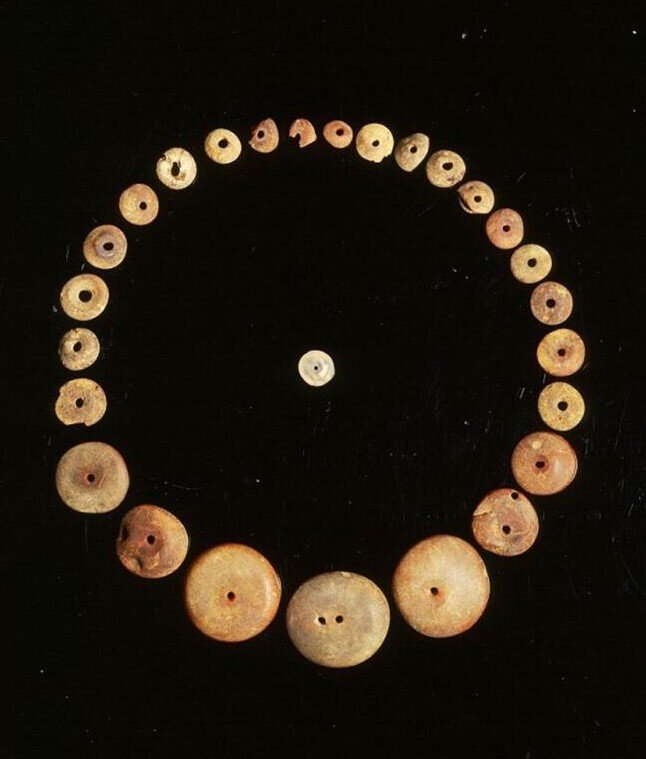In the Netherlands some necklaces, beads and pendants made of amber have been excavated by archaeologists. They mostly date from the Early Bronze Age to the Early Latène Period (see map below).
In the province of Drenthe (in the northeast of the country, east of the Ijsselmeer) there is a considerable amount of Early to Middle Bronze Age necklace finds. The necklaces are mostly made of amber beads and in some cases are supplemented by beads made of faience, pewter and bronze sheet. The raw amber for the necklaces most likely came from not too far away (Friesland or possibly Jutland). It is assumed that many of the necklaces were made locally.
Archeologie van Nederland - Rijksmuseum van Oudheden
Amber beads, 1200-800 B.C., Emmen, Netherlands.
In the Bronze Age (1900-800 BC), agricultural life flourished in the Drenthe region. It is estimated that about 4,500 people, spread over small settlements, lived in Drenthe at that time. Today, the province is a Mecca for cyclists with three beautiful national parks within its borders: National Park "Dwingelderveld" with the largest contiguous wet heath area in the Netherlands, National Park "Drents-Friese Wold" with the second largest contiguous forest area in Holland, National Park "Drentsche Aa" with many heath fields, moors and dunes.
The National Park "Dwingelderveld" is the largest contiguous wet heath area in the Netherlands, in: https://reise-stories.de/drenthe-ist-hollands-fahrrad-provinz-nummer-1/ Photo: MarketingDrenthe.
Literature:
Archeologie van Nederland - Rijksmuseum van Oudheden
J.J Butler, BRONZE AGE METAL AND AMBER IN THE NETHERLANDS (I)Biologisch-Archaeologisch Instituut Groningen, Nederland
https://reise-stories.de/drenthe-ist-hollands-fahrrad-provinz-nummer-1/
https://www.terugindrenthe.nl/en/timelines/prehistory/

